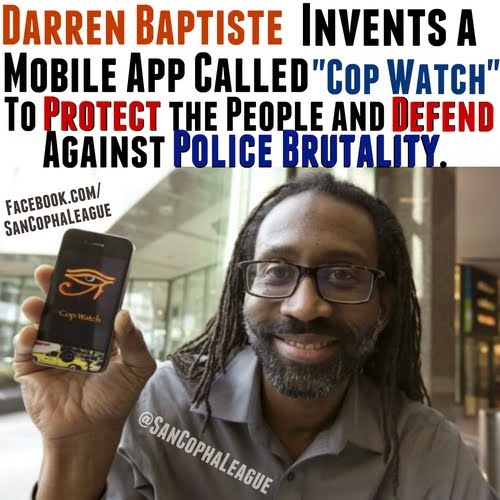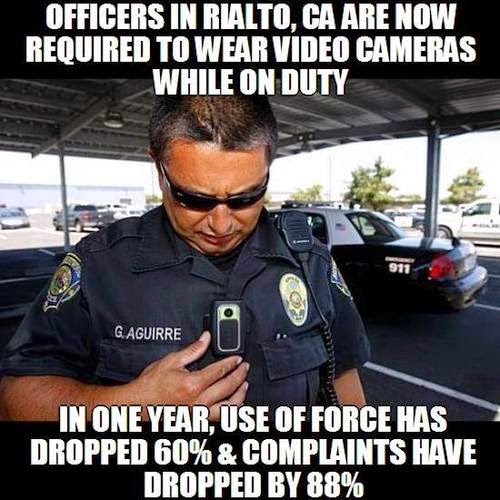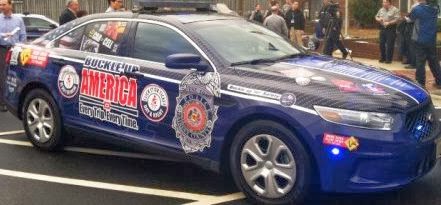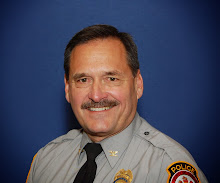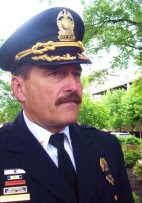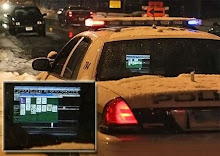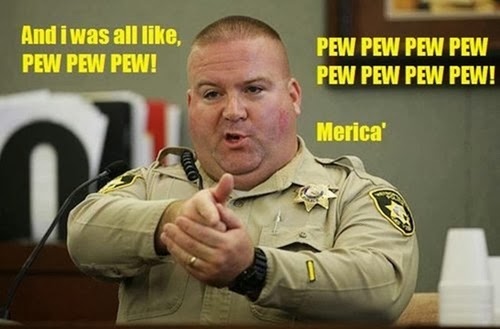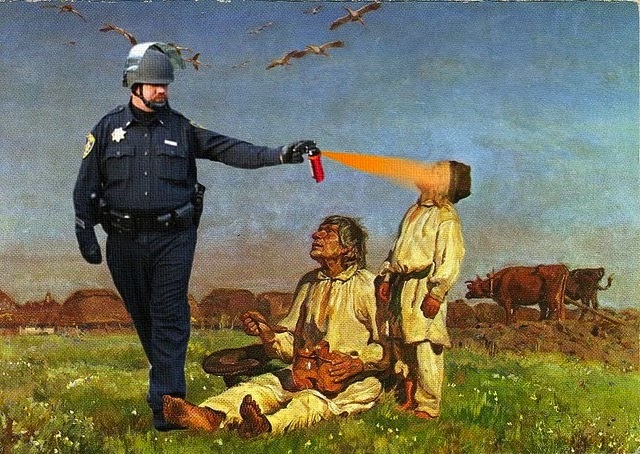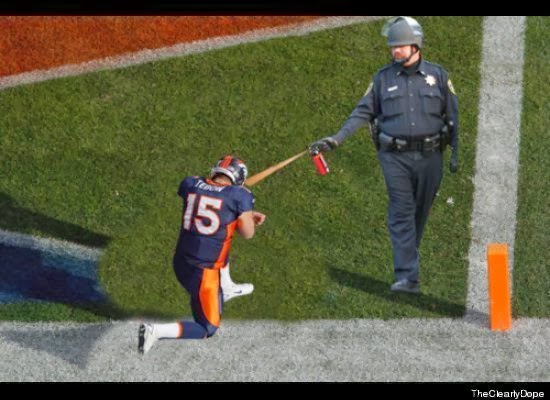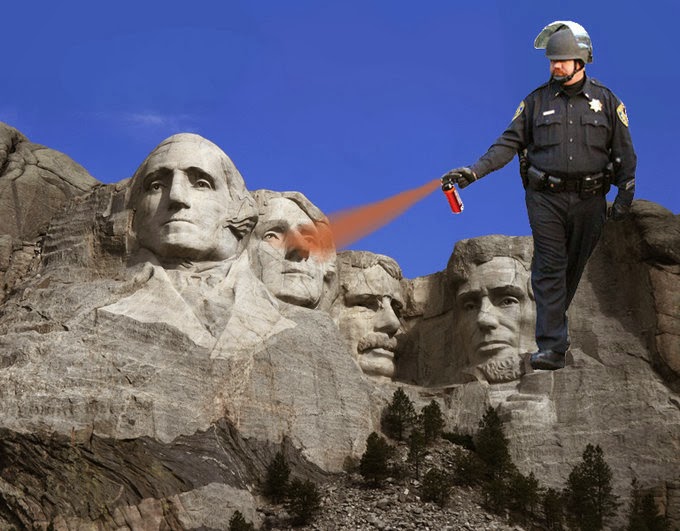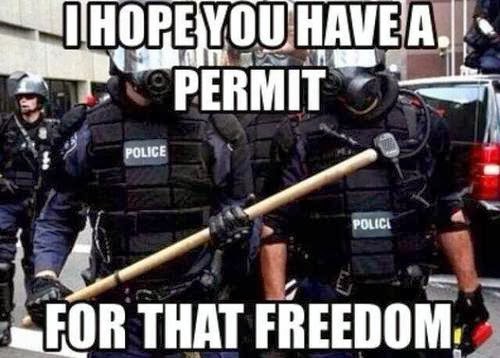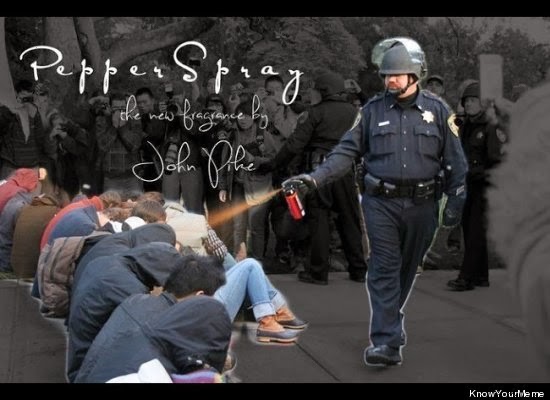The answer is YES
Has asset
forfeiture gone too far?
By Doug McKelway
Customs seized Gerardo Serrano's truck because he had a
handful of legally obtained bullets in his possession; Doug McKelway has the
story for 'Special Report'
WASHINGTON – Two years ago, Gerardo Serano – an
American citizen, Kentucky farmer and a one-time GOP Kentucky statehouse
candidate – was driving his brand new, $60,000 Ford F-250 pick-up truck to
visit relatives in Mexico, snapping pictures along the way, when Customs and
Border Patrol agents halted him at the border, demanded his cell phone, and
asked him why he was taking pictures.
"I just wanted the opening of the bridge. I was gonna
take the opening of the bridge, the entrance of the bridge. That’s all I wanted
to do," Serano told Fox News.
As a self-proclaimed student of the Constitution, Serano
said he knew his rights, and protested to Customs and Border Patrol agents
vehemently when they asked him to unlock his phone.
"You need a warrant for that," he says he told
them. They searched his truck and found five bullets in a magazine clip that
Serano, a Kentucky concealed carry permit holder, forgot to remove before
leaving his home.
"We got you," he says border agents told him. He
was detained, but never arrested, nor charged, nor tried, nor convicted.
However, agents did seize his prized new truck. Two years since its seizure,
they have yet to give it back.
Serano is still making monthly payments of $673 on the
truck as well as paying for its insurance and Kentucky license fees.
His attorneys at the Institute for Justice say Customs and
Border Patrol has told them the truck was subject to the government's Civil
Asset Forfeiture program because it was used to "transport munitions of
war."
The Civil Asset Forfeiture program has its roots in English
law that American colonists rebelled against. Their rebellion was ultimately
codified in the Fourth Amendment, which reads, in part: "The right of the
people to be secure in their persons, houses, papers, and effects, against
unreasonable searches and seizures, shall not be violated..."
Despite that unambiguous language, civil asset forfeiture
was revived in the 1930s Prohibition era against bootleggers and mobsters. It
was revived again in the 1980s war on drugs and continues to this day.
"It’s absolutely astonishing that civil forfeiture is
a policy that we have in this country,” said Clark Neily of the Cato Institute.
“It is totally unjust, unfair, and I think it's unconstitutional."
Sen. Rand Paul, (R-KY) agrees. "There are instances of
people, young people, getting some money and saying, ‘I'm moving to California
from Boston.’ They're stopping in some small town in Nevada, and they have a
thousand bucks their dad gave them to get started,” Paul said. “And the police
just take it and say: ‘You prove to us that this isn't drug money.’"
Gerardo Serrano's truck was seized over five bullets, which
he says were lawfully his. (Institute for Justice)
Morgan Wright, a senior fellow at the Center for Digital
Government, spent 20 years as a police officer and detective in Kansas. He
cites the benefits of civil asset forfeiture.
"We seized everything from cars to houses to money to
jewelry to you name it," he said. "One of the cash seizures I had,
had plans for a methamphetamine laboratory. They had documented intelligence
that they had people working in these operations, people selling cocaine -
cartel activity out of Mexico."
Wright acknowledges asset forfeiture may have gone too far.
"One of the worst things you can do in law enforcement
is to take a good tool and abuse it," Wright said. "So that
restrictive regulations come down on it, and it's taken away from everybody."
Many contend the program's abuses outweigh its benefits.
Congressional critics were outraged, when, this summer, Attorney General Jeff
Sessions ended Obama-era restrictions that blocked forfeiture without a warrant
or criminal charges.
In a rare show of bipartisanship, conservative House
Republicans joined liberal Democrats this month in rolling back Sessions’
undoing of the Obama-era reforms. During floor debate, Rep. Dana Rohrabacher
said: "Asset forfeiture is a crime against the American people committed
by their own government."
"The Fourth Amendment to the Constitution exists to
protect the citizens of this country from being deprived of life, liberty or
property without due process of law. In practice and in principle, adoptive
forfeiture is a violation of that Fourth Amendment," she said
The Senate is also poised to act.
"We have a free-standing bill that says the government
shouldn't take peoples’ property without a conviction, that the burden is on
the government that you actually agreed to commit a crime," Sen. Paul told
Fox News.
"We also will look at, as the funding bills come
through in the House, if they do bring up the Appropriation Bill for the
Department of Justice, I will attach that language to it," he added.
Many say what's needed is a Supreme Court test case. It may
get one.
Serano, represented by the Institute for Justice, is suing
Customs to get his truck back and to end the policy of civil forfeiture once
and for all. Justice Clarence Thomas has publicly said the high court needs a
good case that address the problems of civil asset forfeiture.
I’m sorry this guy lost his job, but what he did was dangerous on a dozen different levels.
Utah cop who dragged
screaming nurse fired from police department A Utah detective who was filmed
handcuffing and dragging a nurse in July has been fired. Jeff Payne, a
detective with the Salt Lake City Police Department, was fired Tuesday
following an investigation, Chief Mike Brown said Tuesday. In a video filmed
July 26, Payne, who was working as a part-time paramedic, asked University
Hospital Nurse Alex Wubbels to draw blood from an unconscious patient, which
she refused to do, citing company policy. The detective had support from his
supervisor, Lt. James Tracy, who said Wubbels could be arrested if she didn't
allow the blood draw. Payne eventually told Wubbels she was under arrest and
physically removed her from the hospital while she screamed, claiming that she
hadn’t done anything wrong. An investigation by a civilian review board found
Payne had apparently become frustrated after a long wait to perform the blood
draw and ignored the nurse's correct explanation that she could not allow it
without a warrant or formal consent from the patient, who had been in a car crash.
Salt Lake City police later apologized for the arrest, changed their blood-draw
policies and placed Payne and Tracy on paid administrative leave after the
video from police body cameras drew widespread attention online. An internal
investigation with the police department found evidence that the officers
violated several policies. Payne was fired from his paramedic job with Gold
Cross Ambulance — a company which he worked for since 1983 — on Sept. 5. Greg
Skordas, Payne’s lawyer, said last month that his client would “love the chance
to sit down and apologize for what happened here. If he could do this over, he
would do it differently.” Skordas also questioned whether Payne’s behavior
warranted being fired.
Once again, require minimum IQ of 100 for cops
New Jersey police detective fathers child
with 15-year-old, is charged with sexual assault of minor
The
police officer received multiple honors for his work.
His
numerous gun and drug arrests at one point earned him “Officer of the Week” in
the Camden County Police Department.
But he
also fathered a child with a 15-year-old girl, and now Camden County Police
Department Det. Rafael Martinez Jr. is facing charges for sexually
assaulting a minor, according to the county prosecutor.
Martinez,
32, reportedly admitted to being the father of the baby. The 15-year-old girl,
identified only as E.L., told authorities that she and Martinez had a sexual
relationship from September 2016 to August 2017, according to New Jersey
newspapers.
The
police officer was suspended after he was arrested on Sept. 12. He earns almost
$66,000 a year, according to the Courier Post.
Martinez
signed the baby’s birth certificate when the child was born in mid-August, the
Courier Post said. An affidavit that is part of the criminal complaint against
Martinez said the teenager told authorities that the police officer was “the
father of her child and that they had sex on multiple occasions at his home.”
A
court-ordered DNA test confirmed Martinez as the father, reports added.
Fairfax County Board To Scrutinize Police Data on Use-of-Force Incidents
That DOES NOT MEAN they're actually going to do
something about, the Board is terrified of the cops, look at the history, the board has NEVER, not once, taken a move to clean up the FCPD
(Below is actually footage of our version of the Fairfax County Board confronting the cops)
Fairfax County’s Board of Supervisors wants
more analysis of data that points to the disproportionate use-of-force against
black individuals by county police.
Two years ago, the Fairfax County Police
Department released a study that found that 40 percent of use-of-force
cases in 2015 involved black individuals.
In response to the study’s release, the board
directed Police Auditor Richard Schott “to review the statistical disparity
between the level of African-American use-of-force incidents and the African American
population in Fairfax County,” according to the county.
Completed last year, Schott’s study on the
police department data didn’t satisfy the supervisors’ questions.
“The report did not yield any clear causes
based upon race, but noted additional evaluation of use-of force data would be
needed for the following years,” Chairman Sharon Bulova said yesterday reading
from the motion. She added FCPD has new procedures and trainings that might
provide more useful data on use-of-force interactions.
Following the 2017 study, Police Chief
Edwin Roessler has been trying to find an academic partner to help with data
analysis for further use-of-force studies, but hasn’t found a “suitable”
partner yet, Bulova said.
In a joint effort, Bulova and Braddock
District Supervisor John Cook presented a motion yesterday (May 7) to direct
the police auditor to coordinate the search for an academic or researcher to
review the disparity and then report findings and any recommendations to the
board.
“As the Police Auditor has experience with
compiling similar types of reports, I am in favor of the Police Auditor’s office
overseeing the search for an academic partner and completion of the
use-of-force study,” Bulova said.
Initially, the motion just focused on hiring
an academic partner, but, at the suggestion of Springfield District
Supervisor Pat Herrity, was changed to also consider hiring a research partner.
Herrity took issue with the comparison used to
evaluate the disparity, saying that analysis should not compare use-of-force
victims to the Fairfax County population, since they may not reside in the
county.
“Almost half of the use-of-force against
African Americans involved non-residents,” he said. “If we’re going to compare
it to our population, we need to do an apples to apples.”
He later clarified his comments,
saying, “I agree it doesn’t matter if you’re a resident or nonresident. You
should be treated fairly.”
Cook responded by saying that the 40 percent
still indicates a racial disparity, regardless of residency.
Fairfax County isn’t the only place
scrutinizing local police use-of-force data and looking to address police
violence against minorities at disproportionate rates.
The mayor of Ithaca, New York ordered an investigation into an incident
between local police and a black man and woman, with some people criticizing
the police on their use of force after videos of the incident were released.
A bill in California that would make it
easier to file criminal charges against
police officers who use lethal force when other options were available has
received widespread support following the death of Stephon Clark, an
unarmed black man shot by police in Sacramento last March.
Over in Wyoming, all law enforcement officers
now must complete training every two years,
which includes courses on when and how to use force.
A study by researchers at the Boston
University School of Public Health found that the disparity between black
and white individuals who are not known to be armed and are shot by police
increases as racism on the state level increases.
FCPD recently released its annual crime report, which listed
500 uses-of-force incidents in 2018. The report does not provide a demographic
breakdown for use-of-force incidents.
So the question is, how much money did the Fairfax County Police get from the feds for collecting the data for them?
Do you honestly think the FCPD is smart enough to have come up with this on their own?
Snap out of it.
Their cops, people become cops because their dumb, that's not my fault or their fault, its the way it is.....think about, a group of guys, in the shadow of the nation's capital, who couldn't wait to get out of high school put this package together on their own
Virginia Judge Rules Automated Collection Of License Plate Data Illegal
A Virginia Judge has ruled that automated license plate collection systems violate state law.
A Circuit Court Judge in Virginia has ruled that automated license plate collection systems are illegal under Virginia law:
A Virginia state judge ruled earlier this month that automated license plate data collection by police qualified as protected “personal information,” and was illegal, because it included the following elements all combined: The license plate number, images of the vehicle and license plate and immediate surroundings, plus GPS location and time and date.
The value of multiple types of data that can be interpolated is greater than one form alone.
Here is the court’s ruling [PDF Link].
EFF has done tons of work on this issue, and the EFF’s Dave Maass wrote a great technology primer you should read if you’re interested. Also, don’t miss EFF’s street-level surveillance FAQ.
This report was published Tuesday at Boing Boing, but the ruling was actually handed down at the beginning of April and The Washington Post reported on the decision at that time:
A Fairfax County judge on Monday ordered the Fairfax County police to stop maintaining a database of photos of vehicle license plates, with the time and location where they were snapped, ruling that “passive use” of data from automated license plate readers on the back of patrol cars violates Virginia privacy law. The ruling followed a related finding by the Virginia Supreme Court last year, meaning the case could affect how long — if at all — Virginia police can keep license plate data.
The ruling by Fairfax Circuit Court Judge Robert J. Smith is a victory for privacy rights advocates who argued that the police could track a person’s movements by compiling the times and exact locations of a car anytime its plate was captured by a license plate reader. Fairfax County Police Chief Edwin C. Roessler Jr. said Monday night that he would ask the county attorney to appeal the ruling.
The issue represents another front in the ongoing conflict over the use of emerging technologies by law enforcement. Police say they can, and have, used license plate location data to find dangerous criminals and missing persons. Privacy advocates don’t oppose the use of the technology during an active investigation, but they say that maintaining a database of license plate locations for months or years provides too much opportunity for abuse by the police. Last month, the ACLU disclosed that the federal Immigration and Customs Enforcement agency was tapping into a vast, national database of police and private license plate readers. Such private databases remain unregulated.
The Fairfax judge’s ruling applies only to the Fairfax police, but it may find a receptive audience, and have statewide impact, in the Virginia Supreme Court. Last year, the state supreme court reversed Smith when he threw the case out of court, finding that “the pictures and associated data stored in the police department’s . . . database meet the statutory definition of ‘personal information'” under Virginia’s “Data Act.” The court sent the case back to Smith to determine whether the database classified as an “information system” under the Data Act. Smith then ruled that it does.
The challenge to the practice was brought by the American Civil Liberties Union of Virginia on behalf of Harrison Neal, a Fairfax man whose license plate and location had been recorded at least twice by the police. The ACLU said Monday that it “welcomes this ruling in favor of our client, as this technology should not be used to monitor the comings and goings of people’s daily lives.”
An automated license plate reader, typically mounted on the back trunk of a patrol car, can snap hundreds of photos per minute of license plates while the car is moving. It then checks those plate numbers against a database of wanted cars, which might be stolen or suspected of being tied to a crime, and alerts the driver in seconds. But it also stores the time and location of when and where the photo was snapped.
Nine states have passed laws limiting how long the police can maintain the data, ranging from three minutes (New Hampshire) to 90 days (Tennessee) to three years (Colorado), according to the National Conference of State Legislatures. Seven other states, including Maryland, have laws restricting the use and dissemination of license plate data but do not put a time limit on how long the data can be kept.
In Virginia, there is no law regarding license plate readers. But the “Data Act” states that “The Commonwealth or any agency or political subdivision thereof shall not collect personal information except as explicitly or implicitly authorized by law.” In 2013, the Virginia State Police asked then-state Attorney General Ken Cuccinelli II if, under that law, they could maintain license plate data. Cuccinelli issued an opinion saying they could not, and the state police have since purged their license plate data every 24 hours.
But The Washington Post found that other agencies around Virginia ignored the nonbinding attorney general’s opinion. Fairfax police keep the data for a year. Alexandria police keep it for two years. In 2015, a new bipartisan “Ben Franklin liberty caucus” was founded in the Virginia General Assembly, and a practically unanimous legislature passed a bill limiting the license data retention to seven days.
But then-Governor Terry McAuliffe, heeding the warnings of law enforcement that they needed the data to find criminals, vetoed the bill. License plate readers had been used by police in New York to help track down a man suspected of planting bombs in Manhattan months earlier, and police in Arlington, Va., found a 67-year-old man who had been missing for two days, and was near death, when his car was recorded blocks away from his residence.
After legislation failed, the ACLU sued in Fairfax, seeking an injunction against the “passive collection” of license plate data beyond an immediate need or existing criminal investigation. In 2016, Judge Smith granted Fairfax’s motion to dismiss the case, saying that “license plate number” is not included in the Data Act’s definition of “personal information.” Smith ruled that a license plate number “does not tell the researcher where the person is, what the person is doing, or anything else about the person.”
Then the Virginia Supreme Court agreed to hear the ACLU’s appeal. Last year, Justice Cleo E. Powell wrote that, while the plate number alone doesn’t identify anyone, the photo of the vehicle and its surroundings, as well as the time and place information, would “afford a basis for inferring personal characteristics” or the presence of a person at a certain place and time — “personal information,” the court found.
The Supreme Court sent the case back to Smith to determine if the license plate database is an “information system” as defined by the Data Act. Smith held a hearing in December to learn in detail how the system works. He found that officers can log into the license plate database to get information on a vehicle’s whereabouts, and then log in separately to the federal and state criminal information systems, or the state motor vehicle database, to discover the vehicle’s owner.
The license plate database “does enable police officers to cross-reference ALPR [automated license plate reader] data with the identity of an individual,” Smith wrote. “The Police Department’s ‘passive use’ of the ALPR system therefore violates the Data Act.”
It’s important to note at the offset that this ruling by Circuit Court Judge Robert Smith, who has been on the bench for more than 20 years and before whom I appeared many times, does not involve either the interpretation of the Virginia or Federal Constitution. Instead, it involves the question of whether or not the database that police in Fairfax County, the state’s most populated jurisdiction, maintain from their network of cruiser-mounted license plate readers complies with the Virginia Data Act, a law that regulates how, and for how long, personal information collected by state agencies such as law enforcement may be kept before the information must be purged from the system. As such, its applicability and usefulness outside Virginia, and indeed outside of the facts of this specific case, is entirely unclear. Nonetheless, the extent to which this is a victory for privacy rights advocates cannot be understated.
PrivacySOS has more:
The ACLU has been sounding the alarm about the use of ALPRs all over the country since 2012. While some states have regulated their use, limiting the time police departments can retain non-derogatory information, most police departments use the systems to conduct both active and passive surveillance—that is, to actively search for cars connected to suspected criminal activity, and to collect and retain for long periods information about drivers who are not suspected of any crimes.
In this ACLU lawsuit in Virginia, the key question was whether the collection and storage of Neal’s license plate data without suspicion of any criminal activity was legal under Virginia state law. To determine if the surveillance violated that law, the ACLU had to prove two things. First, the ACLU had to demonstrate that the state data protection law applied to the police department’s collection of license plate reader data—specifically, that the records constituted personal information and that the license plate reader record keeping system was an information system as defined under the state law. Second, provided the law applied, the ACLU had to prove that the police department’s passive surveillance was not exempt from the law and that therefore the creation of the database violated it. To do that, the ACLU argued that this type of surveillance violated the law’s provision requiring a clear and established need to collect information.
The ACLU lost at the circuit court, which held in favor of the police department. But the ACLU appealed, and theVirginia Supreme Court reversed the lower court’s decision, ruling in favor of the ACLU and Neal. Writing for the Court, Justice Powell’s decision hinged on three main questions. First, does ALPR information constitute “personal information” as defined by the statute? Second, is the ALPR database an “information system” protected under the state law? And finally, if the answers to the first two questions are ‘yes,’ is there an exemption from the data protection law that applies to the personal records and information system at issue?
To answer the first question, the Court looked to the nature of the information collected. The Justices used a framework that distinguished license plate numbers per se from ALPR data. While the former is not personal information, the latter is, the Court held. Under Virginia law, information is considered “personal information” when it affords a basis for inferring personal characteristics or the presence of an identified individual. The Court ruled that license plate numbers alone are just a combination of characters, and that whether or not they constitute personal information depends on the context in which they are used. But ALPR data is different, the Court held, because it contains not only the license plate number, but also images of the vehicle, its license plate, its immediate surroundings, and the GPS location, time, and date captured with the image. Taken together, this information allows its holder to infer personal characteristics and show where individuals have been. Consequently, the Justices decided, ALPR records fall under the statutory definition of “personal information.”
Next, the Court examined whether the ALPR system constitutes an “information system” protected under the statute. Unsurprisingly, there is a direct connection between this issue and the previous one: the law defines an information system as a record-keeping process that contains both personal information and identifiers (like names or personal numbers) of particular individuals. Here, the Court ruled that the ALPR information constitutes personal information. But given the information before it, the Court could not discern if there was a sufficient link between the license plate number and Neal to characterize that number as one of the identifiers that would complete the information system equation. Accordingly, the Justices remanded the case to the lower court to decide this issue.
Finally, the Court looked at the scope of the law enforcement exemption in the state law. The exemption excludes from the statute’s protections information systems that relate to investigations and intelligence gathering related to criminal activity. Here, in accordance with the opinion of the Attorney General, issued in 2013, the Court decided that the exemption did not apply to passive surveillance. The 2013 AG opinion concluded that the state police’s passive collection of ALPR data violated state law because there was not a clear “need” for its collection. The AG reasoned that the value of records revealing where people not suspected of criminal activity have traveled to a criminal investigation was “wholly speculative”—a value the data protection statute does not incorporate in any of its exceptions. In other words, the AG and the High Court agreed: There’s no valid need for cops to track the movements of people not suspected of criminal activity.
On remand to the lower court, the only issue left to decide was whether license plate numbers could effectively identify Neal, meaning the ALPR system constituted an information system.
The evidence the lower court heard was very clear: In Virginia, police officers have unlimited access not only to ALPR information but also DMV records and other law enforcement databases—including the National Crime Information Center maintained by the FBI. It’s therefore a trivial matter for a Virigina law enforcement official to connect ALPR data to a person’s name and address. The circle therefore closed. The passive surveillance database was an information system that permitted police to identify people using ALPR data and license plate numbers. Accordingly, its existence was against the law because there was no established need for it to exist
While this case dealt solely with issues of state law, there are those who argue that there are potential Fourth Amendment issues involved in systems such as this. In all honesty, while I consider myself something of a Fourth Amendment zealot, I think the argument that these systems are a per se violation of that Amendment is incredibly weak. There does not appear to be on the surface any per se Constitutional objection to a police officer taking note of the license plates of the vehicles around him or her while out on patrol. Indeed, ever since there have been computers in patrol cars hooked into the relevant databases, it’s been common practice for officers to tap in license plate numbers while waiting in traffic or at stop lights. If a hit comes up — such as a car owned by someone who has a suspended license, or a car on the list of stolen cars — then the officer will typically either pull the car over since they now have reasonable suspicion to do so, or follow the car until further instructions are received. There’s no 4th Amendment violation here because you don’t have a reasonable expectation of privacy in your license plate number and, indeed, you most assuredly don’t if you’re sitting in a traffic jam with a police car directly behind you. The fact that the same thing is being done with technology tied into a central database doesn’t really change the 4th Amendment analysis in the end, but that’s only part of the issue.
Notwithstanding this, as Conor Friedersdorf noted in a piece back in 2013 there is certainly something creepy and concerning about the practice:
Driving down the street, I have no reasonable expectation that my license-plate number won’t be jotted down by someone. But I am aghast at the notion that it could be recorded on all major streets, at all times, with each scan aggregated in a massive database and stored forever. I’m confident that the men who wrote and ratified the Fourth Amendment would be similarly aghast. The technology is here, and increasingly being used.
There isn’t much time left to stop it.
Even though the practice of using technology like this to allow a police officer to determine if any of the cars around him are listed as stolen, or whether they are relevant to some ongoing criminal investigation case does not violate the Fourth Amendment, that doesn’t mean there are not concerns that should be addressed. In that respect, the issue we ought to be concerned with is how the technology is being used, and what’s happening to all the data that it collects. How long are the license plate numbers collected that don’t match up to something kept? Who has access to them? Who could they be shared with and for what purposes? These are only some of the questions that a massive data collection effort like this raises.
Some of them can be answered by Courts utilizing the outlines of the 4th Amendment or, as in this case, state law, to place limits on what law enforcement can do with this sort of technology, just as Courts are just now starting to address the proper limits of GPS tracking technology by law enforcement. Other limits will have to be addressed by legislatures, both Federal and state, put under pressure by the public to protect privacy in an era where its beginning to feel like privacy is dying. The technology genie is out of the bottle, but we still have time to get it under some degree of control if we act.
Snap out of it.
Their cops, people become cops because their dumb, that's not my fault or their fault, its the way it is.....think about, a group of guys, in the shadow of the nation's capital, who couldn't wait to get out of high school put this package together on their own
Virginia Judge Rules Automated Collection Of License Plate Data Illegal
A Virginia Judge has ruled that automated license plate collection systems violate state law.
A Circuit Court Judge in Virginia has ruled that automated license plate collection systems are illegal under Virginia law:
A Virginia state judge ruled earlier this month that automated license plate data collection by police qualified as protected “personal information,” and was illegal, because it included the following elements all combined: The license plate number, images of the vehicle and license plate and immediate surroundings, plus GPS location and time and date.
The value of multiple types of data that can be interpolated is greater than one form alone.
Here is the court’s ruling [PDF Link].
EFF has done tons of work on this issue, and the EFF’s Dave Maass wrote a great technology primer you should read if you’re interested. Also, don’t miss EFF’s street-level surveillance FAQ.
This report was published Tuesday at Boing Boing, but the ruling was actually handed down at the beginning of April and The Washington Post reported on the decision at that time:
A Fairfax County judge on Monday ordered the Fairfax County police to stop maintaining a database of photos of vehicle license plates, with the time and location where they were snapped, ruling that “passive use” of data from automated license plate readers on the back of patrol cars violates Virginia privacy law. The ruling followed a related finding by the Virginia Supreme Court last year, meaning the case could affect how long — if at all — Virginia police can keep license plate data.
The ruling by Fairfax Circuit Court Judge Robert J. Smith is a victory for privacy rights advocates who argued that the police could track a person’s movements by compiling the times and exact locations of a car anytime its plate was captured by a license plate reader. Fairfax County Police Chief Edwin C. Roessler Jr. said Monday night that he would ask the county attorney to appeal the ruling.
The issue represents another front in the ongoing conflict over the use of emerging technologies by law enforcement. Police say they can, and have, used license plate location data to find dangerous criminals and missing persons. Privacy advocates don’t oppose the use of the technology during an active investigation, but they say that maintaining a database of license plate locations for months or years provides too much opportunity for abuse by the police. Last month, the ACLU disclosed that the federal Immigration and Customs Enforcement agency was tapping into a vast, national database of police and private license plate readers. Such private databases remain unregulated.
The Fairfax judge’s ruling applies only to the Fairfax police, but it may find a receptive audience, and have statewide impact, in the Virginia Supreme Court. Last year, the state supreme court reversed Smith when he threw the case out of court, finding that “the pictures and associated data stored in the police department’s . . . database meet the statutory definition of ‘personal information'” under Virginia’s “Data Act.” The court sent the case back to Smith to determine whether the database classified as an “information system” under the Data Act. Smith then ruled that it does.
The challenge to the practice was brought by the American Civil Liberties Union of Virginia on behalf of Harrison Neal, a Fairfax man whose license plate and location had been recorded at least twice by the police. The ACLU said Monday that it “welcomes this ruling in favor of our client, as this technology should not be used to monitor the comings and goings of people’s daily lives.”
An automated license plate reader, typically mounted on the back trunk of a patrol car, can snap hundreds of photos per minute of license plates while the car is moving. It then checks those plate numbers against a database of wanted cars, which might be stolen or suspected of being tied to a crime, and alerts the driver in seconds. But it also stores the time and location of when and where the photo was snapped.
Nine states have passed laws limiting how long the police can maintain the data, ranging from three minutes (New Hampshire) to 90 days (Tennessee) to three years (Colorado), according to the National Conference of State Legislatures. Seven other states, including Maryland, have laws restricting the use and dissemination of license plate data but do not put a time limit on how long the data can be kept.
In Virginia, there is no law regarding license plate readers. But the “Data Act” states that “The Commonwealth or any agency or political subdivision thereof shall not collect personal information except as explicitly or implicitly authorized by law.” In 2013, the Virginia State Police asked then-state Attorney General Ken Cuccinelli II if, under that law, they could maintain license plate data. Cuccinelli issued an opinion saying they could not, and the state police have since purged their license plate data every 24 hours.
But The Washington Post found that other agencies around Virginia ignored the nonbinding attorney general’s opinion. Fairfax police keep the data for a year. Alexandria police keep it for two years. In 2015, a new bipartisan “Ben Franklin liberty caucus” was founded in the Virginia General Assembly, and a practically unanimous legislature passed a bill limiting the license data retention to seven days.
But then-Governor Terry McAuliffe, heeding the warnings of law enforcement that they needed the data to find criminals, vetoed the bill. License plate readers had been used by police in New York to help track down a man suspected of planting bombs in Manhattan months earlier, and police in Arlington, Va., found a 67-year-old man who had been missing for two days, and was near death, when his car was recorded blocks away from his residence.
After legislation failed, the ACLU sued in Fairfax, seeking an injunction against the “passive collection” of license plate data beyond an immediate need or existing criminal investigation. In 2016, Judge Smith granted Fairfax’s motion to dismiss the case, saying that “license plate number” is not included in the Data Act’s definition of “personal information.” Smith ruled that a license plate number “does not tell the researcher where the person is, what the person is doing, or anything else about the person.”
Then the Virginia Supreme Court agreed to hear the ACLU’s appeal. Last year, Justice Cleo E. Powell wrote that, while the plate number alone doesn’t identify anyone, the photo of the vehicle and its surroundings, as well as the time and place information, would “afford a basis for inferring personal characteristics” or the presence of a person at a certain place and time — “personal information,” the court found.
The Supreme Court sent the case back to Smith to determine if the license plate database is an “information system” as defined by the Data Act. Smith held a hearing in December to learn in detail how the system works. He found that officers can log into the license plate database to get information on a vehicle’s whereabouts, and then log in separately to the federal and state criminal information systems, or the state motor vehicle database, to discover the vehicle’s owner.
The license plate database “does enable police officers to cross-reference ALPR [automated license plate reader] data with the identity of an individual,” Smith wrote. “The Police Department’s ‘passive use’ of the ALPR system therefore violates the Data Act.”
It’s important to note at the offset that this ruling by Circuit Court Judge Robert Smith, who has been on the bench for more than 20 years and before whom I appeared many times, does not involve either the interpretation of the Virginia or Federal Constitution. Instead, it involves the question of whether or not the database that police in Fairfax County, the state’s most populated jurisdiction, maintain from their network of cruiser-mounted license plate readers complies with the Virginia Data Act, a law that regulates how, and for how long, personal information collected by state agencies such as law enforcement may be kept before the information must be purged from the system. As such, its applicability and usefulness outside Virginia, and indeed outside of the facts of this specific case, is entirely unclear. Nonetheless, the extent to which this is a victory for privacy rights advocates cannot be understated.
PrivacySOS has more:
The ACLU has been sounding the alarm about the use of ALPRs all over the country since 2012. While some states have regulated their use, limiting the time police departments can retain non-derogatory information, most police departments use the systems to conduct both active and passive surveillance—that is, to actively search for cars connected to suspected criminal activity, and to collect and retain for long periods information about drivers who are not suspected of any crimes.
In this ACLU lawsuit in Virginia, the key question was whether the collection and storage of Neal’s license plate data without suspicion of any criminal activity was legal under Virginia state law. To determine if the surveillance violated that law, the ACLU had to prove two things. First, the ACLU had to demonstrate that the state data protection law applied to the police department’s collection of license plate reader data—specifically, that the records constituted personal information and that the license plate reader record keeping system was an information system as defined under the state law. Second, provided the law applied, the ACLU had to prove that the police department’s passive surveillance was not exempt from the law and that therefore the creation of the database violated it. To do that, the ACLU argued that this type of surveillance violated the law’s provision requiring a clear and established need to collect information.
The ACLU lost at the circuit court, which held in favor of the police department. But the ACLU appealed, and theVirginia Supreme Court reversed the lower court’s decision, ruling in favor of the ACLU and Neal. Writing for the Court, Justice Powell’s decision hinged on three main questions. First, does ALPR information constitute “personal information” as defined by the statute? Second, is the ALPR database an “information system” protected under the state law? And finally, if the answers to the first two questions are ‘yes,’ is there an exemption from the data protection law that applies to the personal records and information system at issue?
To answer the first question, the Court looked to the nature of the information collected. The Justices used a framework that distinguished license plate numbers per se from ALPR data. While the former is not personal information, the latter is, the Court held. Under Virginia law, information is considered “personal information” when it affords a basis for inferring personal characteristics or the presence of an identified individual. The Court ruled that license plate numbers alone are just a combination of characters, and that whether or not they constitute personal information depends on the context in which they are used. But ALPR data is different, the Court held, because it contains not only the license plate number, but also images of the vehicle, its license plate, its immediate surroundings, and the GPS location, time, and date captured with the image. Taken together, this information allows its holder to infer personal characteristics and show where individuals have been. Consequently, the Justices decided, ALPR records fall under the statutory definition of “personal information.”
Next, the Court examined whether the ALPR system constitutes an “information system” protected under the statute. Unsurprisingly, there is a direct connection between this issue and the previous one: the law defines an information system as a record-keeping process that contains both personal information and identifiers (like names or personal numbers) of particular individuals. Here, the Court ruled that the ALPR information constitutes personal information. But given the information before it, the Court could not discern if there was a sufficient link between the license plate number and Neal to characterize that number as one of the identifiers that would complete the information system equation. Accordingly, the Justices remanded the case to the lower court to decide this issue.
Finally, the Court looked at the scope of the law enforcement exemption in the state law. The exemption excludes from the statute’s protections information systems that relate to investigations and intelligence gathering related to criminal activity. Here, in accordance with the opinion of the Attorney General, issued in 2013, the Court decided that the exemption did not apply to passive surveillance. The 2013 AG opinion concluded that the state police’s passive collection of ALPR data violated state law because there was not a clear “need” for its collection. The AG reasoned that the value of records revealing where people not suspected of criminal activity have traveled to a criminal investigation was “wholly speculative”—a value the data protection statute does not incorporate in any of its exceptions. In other words, the AG and the High Court agreed: There’s no valid need for cops to track the movements of people not suspected of criminal activity.
On remand to the lower court, the only issue left to decide was whether license plate numbers could effectively identify Neal, meaning the ALPR system constituted an information system.
The evidence the lower court heard was very clear: In Virginia, police officers have unlimited access not only to ALPR information but also DMV records and other law enforcement databases—including the National Crime Information Center maintained by the FBI. It’s therefore a trivial matter for a Virigina law enforcement official to connect ALPR data to a person’s name and address. The circle therefore closed. The passive surveillance database was an information system that permitted police to identify people using ALPR data and license plate numbers. Accordingly, its existence was against the law because there was no established need for it to exist
While this case dealt solely with issues of state law, there are those who argue that there are potential Fourth Amendment issues involved in systems such as this. In all honesty, while I consider myself something of a Fourth Amendment zealot, I think the argument that these systems are a per se violation of that Amendment is incredibly weak. There does not appear to be on the surface any per se Constitutional objection to a police officer taking note of the license plates of the vehicles around him or her while out on patrol. Indeed, ever since there have been computers in patrol cars hooked into the relevant databases, it’s been common practice for officers to tap in license plate numbers while waiting in traffic or at stop lights. If a hit comes up — such as a car owned by someone who has a suspended license, or a car on the list of stolen cars — then the officer will typically either pull the car over since they now have reasonable suspicion to do so, or follow the car until further instructions are received. There’s no 4th Amendment violation here because you don’t have a reasonable expectation of privacy in your license plate number and, indeed, you most assuredly don’t if you’re sitting in a traffic jam with a police car directly behind you. The fact that the same thing is being done with technology tied into a central database doesn’t really change the 4th Amendment analysis in the end, but that’s only part of the issue.
Notwithstanding this, as Conor Friedersdorf noted in a piece back in 2013 there is certainly something creepy and concerning about the practice:
Driving down the street, I have no reasonable expectation that my license-plate number won’t be jotted down by someone. But I am aghast at the notion that it could be recorded on all major streets, at all times, with each scan aggregated in a massive database and stored forever. I’m confident that the men who wrote and ratified the Fourth Amendment would be similarly aghast. The technology is here, and increasingly being used.
There isn’t much time left to stop it.
Even though the practice of using technology like this to allow a police officer to determine if any of the cars around him are listed as stolen, or whether they are relevant to some ongoing criminal investigation case does not violate the Fourth Amendment, that doesn’t mean there are not concerns that should be addressed. In that respect, the issue we ought to be concerned with is how the technology is being used, and what’s happening to all the data that it collects. How long are the license plate numbers collected that don’t match up to something kept? Who has access to them? Who could they be shared with and for what purposes? These are only some of the questions that a massive data collection effort like this raises.
Some of them can be answered by Courts utilizing the outlines of the 4th Amendment or, as in this case, state law, to place limits on what law enforcement can do with this sort of technology, just as Courts are just now starting to address the proper limits of GPS tracking technology by law enforcement. Other limits will have to be addressed by legislatures, both Federal and state, put under pressure by the public to protect privacy in an era where its beginning to feel like privacy is dying. The technology genie is out of the bottle, but we still have time to get it under some degree of control if we act.
Fairfax County Police Department disputes claims
Fairfax
County Police Department disputes claims that woman was "body
slammed"
TYSONS,
Va. - The Fairfax County Police Department is disputing social media claims
that a woman was body slammed during an arrest last week.
Police
released this surveillance video of the moment a 19-year-old woman was arrested
for disorderly conduct after her friend was caught shoplifting at Spencer's in
Tysons Corner Center. On Thursday, a Facebook post went viral claiming that the
woman was slammed face first into the ground. Fairfax County's police chief
says the video on social media only shows part of what actually happened.
"The
officer used a guided escort with her own weight to take her gently down to the
floor so the struggle would stop and it would prevent harm to herself and other
and police officers. That was not body slamming at all and that allegation is
absolutely false and that's why I released the video," Chief Edwin C.
Roessler with the Fairfax County Police Department said.
Chief
Roessler has directed the internal affairs bureau to review this matter and has
requested an independent investigation by the police auditor.
Fairfax Co.
police dispute social media claims woman was slammed to ground during arrest
After three people were arrested at Tysons Corner Center
last Thursday, Fairfax County
police released surveillance footage from inside the Virginia
store to dispute a social media post that claims one of the arrested people was
slammed to the ground.
Police said it all happened on Thursday, April 25 when
22-year-old Molly Helmer of Annandale was caught shoplifting at the Spencer’s
store. An officer responded and issued her a summons for a future court date.
Police say Helmer was leaving with a group of friends when
19-year-old Lia Chen of Annadale threw her water bottle and dumped her drink
all over the floor as police stood by in plain clothes.
Steve Bun, 27, of Fairfax, Virginia, was one of the three
people arrested for disorderly conduct that day. According to his Facebook
post, he witnessed Chen’s arrest and began to record from outside
the store.
Chen was approached by
an officer and she began screaming and acting disorderly before being taken
back to the store, police said in a Tuesday news release. Chen attempted to
break free.
Police said they tried to gain control of her and keep her
from hurting herself or others and “she was taken to the ground by the
arresting officer and finally handcuffed.”
Bun’s Facebook post claims police were “manhandling” Chen
before “slamming her face first into the ground.”
Chen was issued a summons for disorderly conduct and
obstruction of justice and was banned from Tysons Corner Center for a year.
Police said Bun approached officers aggressively, cursing
at them and interfering with the police investigation, resulting in his arrest
for disorderly conduct.
Bun’s Facebook post claims he was rammed into a brick wall
outside of the store, breaking his Apple Watch and injuring his hand.
Bun was taken to the Fairfax County Adult Detention Center
and was released on a $2,000 bond.
Cops claim right of way after cruiser and cyclist collide
Video footage showing a police officer from the Mount Vernon
District Station and a cyclist colliding at an intersection on Sunday, April
21, 2019, has divided opinion about who was at fault.
The Fairfax County Police Department (FCPD) claims the officer
had right of way when turning right at the intersection of Fordson Road and
Richmond Highway in the Hybla Valley area.
FCPD reported on Wednesday, April 24, that 55-year-old
cyclist Thomas Crawley, of Alexandria, has been charged in connection with the
incident for failing to pay full time and attention. FCPD also released dashcam
footage from the police car.
Police said the officer was turning onto the Richmond
Highway from the Fordson Road exit of Mount Vernon Plaza when the incident
occurred. Crawley was travelling northbound along the pedestrian pathway and
entered the intersection just as the police cruiser began turning onto the
highway.
“[The cyclist] entered Fordson Road from the sidewalk
without stopping and disregarded the pedestrian signal,” police said.
“Our investigation shows the officer had the right of way
and determined it was safe to enter the intersection when the cyclist came off
the sidewalk and hit the cruiser.”
A separate video from another car’s dashcam showed the
officer immediately existing his vehicle after the incident and rendering aid,
and the cyclist managed to get to his feet. An ambulance transported Crawley to
a local hospital with minor injuries, police said.
Despite claiming right of way, FCPD has launched an administrative
investigation into the incident in accordance with policy.
The question over who is at fault, or who struck whom, has
been actively debated online since the video footage surfaced.
Fairfax County National Association for the Advancement of
Colored People (NAACP) claimed on Twitter that the officer wasn’t paying
attention.
“Today, an FCPD officer who wasn’t paying attention struck a
cyclist in a crosswalk and they charged the cyclist with a crime,” stated @FairfaxNAACP in a series of tweets.
“To say the ‘cyclist came off the sidewalk and hit the
cruiser’ requires a suspension of reality. When the front of your vehicle hits
the side of another vehicle, that means you caused the crash.”
Some have pointed to the incident to highlight the need for
more cyclist-friendly roadways.
“This is why we need improved bike infrastructure on U.S. 1
like YESTERDAY,” State Sen. Scott Surovell said on Twitter.
The incident over the weekend muddied the start of FCPD’s
“Street Smart” campaign, which was launched only two days later on Tuesday,
April 23. The campaign runs through May 13.
Fairfax County Chief of Police Colonel Edwin Roessler has
said that “pedestrian fatalities are outpacing our murder rate.” Pedestrian and
cyclist deaths account for over 33 percent of the County’s traffic fatalities.
According to statistics released by police, there were 16
pedestrian fatalities, 174 pedestrian crashes and 196 pedestrian injuries in
Fairfax County in 2018. So far this year, there have been eight pedestrian
fatalities, 43 pedestrian crashes and over 40 pedestrian injuries.
Bottom of
Form
FABB takes issue with police description
of crash involving cruiser
The Fairfax Alliance
for Better Bicycling (FABB) has written a letter to Fairfax County Police Chief
Edwin Roessler taking exception to both the chief’s and the department’s
descriptions of a crash between a bicycle and police cruiser on April 21.
Bruce Wright, an FABB
Board Member and head of their Law Enforcement Working Group, says in the
letter that the FABB has “major concerns about the department’s response to the
crash,” which happened around 10:20 a.m. on Easter Sunday in the 7700 block of
Richmond Highway.
The collision was
captured on a dashboard camera in a car driving south on Route 1, as well as
the police cruiser’s in-car camera. The video shows the police cruiser stopped
while waiting to make a right turn on red out of the Mount Vernon Plaza
shopping center the intersection of Fordson Road. The cruiser begins pulling
forward to make the turn and then strikes the 55-year-old cyclist after he had
entered the intersection riding north.
Wright says Roessler
was incorrect to say the cyclist was going the wrong way, noting that the
cyclist was on a mixed-use path intended for pedestrians and bicyclists, rather
than the roadway. The letter also takes issue with the FCPD’s official
statement on the crash, which says the bicyclist hit the cruiser, and not vice
versa.
Alexandria resident
Thomas Crawley suffered minor injuries in the collision. He was later cited for
failure to pay full time and attention.
“It is simply
impossible for the cyclist to have hit the cruiser if [dashcam] video footage
is to be believed,” the letter says. “We also have concerns about the Chief’s
quote, which is contradicted by the Department’s official version and creates
the perception that the cyclist was riding extremely recklessly.”
The collision was not
reported by the police until three days after the incident, following the
publication of the video on social media and Covering The Corridor.
Wright says the FABB
wants further clarification for why the cyclist was cited, and requested a
meeting the the FCPD to discuss the issue further.
“We would like you to
clarify your comments and correct the police statement,” Wright says in the
letter. “If other officers read your comments and act accordingly, cyclists
will continue to be blamed for legal behavior such as riding against traffic on
a trail or sidewalk and riding in a crosswalk.”
The full letter, which was shared with Covering The Corridor and
other media outlets, can be read below:
Dear Chief Roessler,
I am writing on behalf
of Fairfax Alliance for Better Bicycling (FABB) regarding FCPD’s response
to the crash that occurred on
Richmond Highway at Fordson Road on Sunday April 21. In an April 24 article in the
Washington Post you are quoted about the cyclist injured by one
of your officers in the crash: “… He’s going the wrong way. He’s going against
traffic. He’s going against the red pedestrian signal. Once that bicycle enters
the roadway, they’re subject to all the vehicular laws.”
The Fairfax County Police’s
official statement about the incident states that the cyclist
was riding on the sidewalk, a mixed use path along that section of Route 1 and
not in the roadway. Further, that statement says “Our investigation shows the
officer had the right of way and determined it was safe to enter the
intersection when the cyclist came off the sidewalk and hit the cruiser.”
We have major concerns
about the department’s response to the crash with the cyclist — which both
the police dashcam footage, and bystander video footage
show to be untrue. It is simply impossible for the cyclist to have hit the
cruiser if either video footage is to be believed. We also have concerns about
the Chief’s quote, which is contradicted by the Department’s official
version and creates the perception that the cyclist was riding
extremely recklessly.
1.
The cyclist was riding
on a paved trail parallel to the road where it is perfectly legal to ride in
the opposite direction of traffic.
2.
A cyclist entering the
roadway, in a crosswalk, is considered a pedestrian and vehicular laws do not
apply. According to VA code 46.2-904, “A person riding a bicycle, … on a
sidewalk or shared-use path or across a roadway on a crosswalk shall have all
the rights and duties of a pedestrian under the same circumstances.”
3.
The cyclist did not hit
the cruiser, the officer driving the cruiser hit the cyclist.
The cyclist should not
have entered the crosswalk if there was a working pedestrian signal and the
DON’T WALK signal was indicated. However, FABB is concerned that your statements
and the official police statement implied wrongdoing on the part of the cyclist
when that was not the case (riding against traffic on a trail, riding in a
crosswalk, and hitting the cruiser).
We have heard similar
comments from police in the past about riding on the sidewalk or in a
crosswalk. In fact, such comments prompted FABB to seek a meeting with Chairman
Sharon Bulova and Deputy County Executive Roher to discuss Department
understanding of the law as it applies to bicyclists. A result of the meeting
was the production of a police training video by Officer Allie Eggers entitled
“Bicycle Focused Laws.”
We would like you to
clarify your comments and correct the police statement. If other officers read
your comments and act accordingly, cyclists will continue to be blamed for
legal behavior such as riding against traffic on a trail or sidewalk and riding
in a crosswalk. In addition, the comments feed into the community viewpoint
that all bicyclists are scofflaws and will flaunt the law.
We are also concerned
the cyclist was cited using Fairfax County code “82-4-24. Operator to give full
time and attention to driving.” According to that law, “No person shall operate
a motor vehicle upon the highways of this County without giving his full time
and attention to the operation of the vehicle.” The code specifically states
“…motor vehicle upon the highways…” According to VA code 46.2-100, “a bicycle
shall be a vehicle while operated on the highway,” not a “motor vehicle,” and
the cyclist was not on the highway, he was in a crosswalk. We would like
further clarification regarding this citation.
There was no mention
of the responsibilities of the motorist, the officer who struck the cyclist.
Had the officer looked right he would have seen the cyclist approaching. It was
the officer’s responsibility to cautiously enter the intersection and to look
right before turning, advice given as part of the Street Smart campaign event held
two days after the crash.
We would like to meet
with you to discuss these issues and to see if we can collaborate on improving
communication between FCPD and the bicycle and pedestrian community. Please
contact bruce@fabb-bikes.org to schedule the meeting.
Sincerely,
Bruce Wright on behalf
of the Law Enforcement Working Group, Fairfax Alliance for Better Bicycling
(FABB)
CC: Fairfax County Board
of Supervisors
Covering The Corridor
The Washington Post
Covering The Corridor
The Washington Post
Fundraiser for cops razor
FCPD
promotes Mount Vernon Police District station commander Major Matt Owens
Fundraiser
started to buy him a razor and shaving cream for his new job
Commander of the Mount
Vernon Police District station Major Matt Owens has been promoted to lead the
Fairfax County Police Department’s Internal Affairs Bureau effective Saturday,
April 27, 2019.
Subscribe to:
Posts (Atom)












